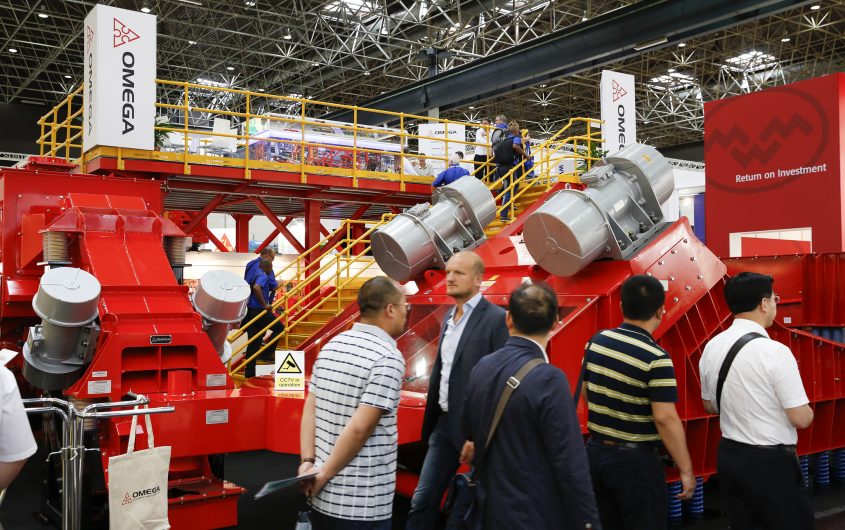
Executive Search in China via Flickr
Transatlantic Responses to a Global China

Yixiang Xu
China Fellow; Program Officer, Geoeconomics
Yixiang Xu is the China Fellow and Program Officer, Geoeconomics at AGI, leading the Institute’s work on U.S. and German relations with China. He has written extensively on Sino-EU and Sino-German relations, transatlantic cooperation on China policy, Sino-U.S. great power competition, China's Belt-and-Road Initiative and its implications for Germany and the U.S., Chinese engagement in Central and Eastern Europe, foreign investment screening, EU and U.S. strategies for global infrastructure investment, 5G supply chain and infrastructure security, and the future of Artificial Intelligence. His written contributions have been published by institutes including The Chinese Academy of Social Sciences, The United States Institute of Peace, and The Asia Society's Center for U.S.-China Relations. He has spoken on China's role in transatlantic relations at various seminars and international conferences in China, Germany, and the U.S.
Mr. Xu received his MA in International Political Economy from The Josef Korbel School of International Studies at The University of Denver and his BA in Linguistics and Classics from The University of Pittsburgh. He is an alumnus of the Bucerius Summer School on Global Governance, the Global Bridges European-American Young Leaders Conference, and the Brussels Forum's Young Professionals Summit. Mr. Xu also studied in China, Germany, Israel, Italy, and the UK and speaks Mandarin Chinese, German, and Russian.
__
For seventeen years since China’s accession to the World Trade Organization in 2001, Beijing has shaped its industrial policy to benefit from the international free trade regime, sustaining extraordinary economic growth. As President Xi Jinping presses ahead to expand China’s economic interests across the globe through his signature Belt-and-Road Initiative (BRI), Western liberal market economies, principally the United States and the European Union, are increasingly frustrated by Beijing’s refusal to honor its obligations as a market economy laid out in its WTO accession treaty. Furthermore, Xi’s plan to systemically acquire cutting-edge technologies and dominate the high-tech sector strengthened the Trump administration’s resolve to demand wide-ranging, substantive policy reforms in China. Germany has also begun to reevaluate its close economic relationship with China amid mounting concerns about continuing Chinese acquisition of German technology firms, lack of reciprocal market access in China, as well as growing Chinese geoeconomic influence along the proposed Chinese trade routes and inside the EU.
Recent AGI Publications on China
Tackling Intellectual Property Rights and Forced Technology Transfer in China
For years, U.S. and German policy experts and government officials have accused Beijing of poor Intellectual property rights (IPR) protection and forced technology transfer practices. A combination of mandatory joint venture requirements, discriminatory licensing practices, and cyber intrusions prompted the U.S. and the EU to file WTO disputes against China. The Trump administration has employed steep tariffs on Chinese imports to pressure Beijing to commit to enforceable policy measures against IPR theft and forced technology transfer. Although still opposed to U.S. tariffs, Berlin and Brussels have come to appreciate Washington’s tough stance to push for long overdue reforms in China. In the past few years, both sides of the Atlantic have stepped up measures to protect their technologies from a wave of Chinese acquisitions. The U.S. Foreign Investment Risk Modernization Act, which expanded the scope of review for the Committee on Foreign Investment in the United States on national security grounds, and a new EU-wide foreign direct investment screening mechanism signal the convergence of transatlantic approaches to China’s economic competition.
There is hope that, as Chinese companies expand their ventures abroad and edge ahead in technology development, Beijing will realize the benefit of implementing a strong IPR protection regime and reverse its current practices of technology transfer. But, while pushing for reforms in China, it is crucial to understand that Beijing does not intend to conform to the West’s market economy system. Therefore, a successful strategy to meet China’s challenge needs to include reshaping our own system to simultaneously strengthen the free and open nature of the market economy and boost our technological competitiveness. Maintaining local manufacturing capacity, increasing public support for research on technological applications, and supporting research at universities are important steps to keep innovative advantages in our economies.
At the same time, engaging allies and partners bolsters the U.S. and EU’s ability to lay down the rules and standards for global trade and investment in the future. With continuing support from the U.S., the Trans-Pacific Partnership could have been a highly effective cornerstone for a free and fair trade regime in the Asia-Pacific region. The recent trilateral meeting of trade ministers of the U.S., Japan, and the EU is a welcome step toward multilateral cooperation among partners. However, the Trump administration’s tariffs and hostile rhetoric against the EU, and Germany in particular, impede the European allies’ willingness to cooperate on matters regarding China and the broader global economic order, amounting to a missed opportunity when China’s slowing economy amplifies the ongoing reform pressure on Beijing.
Looking for A Practical Strategy to Meet the BRI Challenge in Asia-Pacific
As the centerpiece for Xi Jinping’s Chinese national rejuvenation plan, the BRI has rapidly expanded Chinese economic engagement across the Eurasian continent into Africa and Europe. Beijing’s launch of high-profile, strategic infrastructure development projects has pushed the U.S. and the EU into a defensive position. Pointing to expensive projects in Malaysia and Sri Lanka that sank local governments deep into debt, parallel efforts are being made across the Atlantic to warn countries of unintended consequences of accommodating China’s ambitious regional designs. A range of strategic initiatives has emerged in response to BRI. The U.S. Free and Open Indo-Pacific Strategy and the EU’s Europe-Asia Connectivity Strategy, alongside those from Japan, Australia, and India, offer various alternatives to a Sino-centric regional order linked by massive Chinese investments.
Amid open criticism from the West and backlash from BRI partners such as Malaysia and Sri Lanka, China appears to have tempered its rhetoric. Slower economic growth at home is also forcing Beijing to reevaluate the scope of its ambitions. But, as China grapples for influence, Xi Jinping has made clear that China will use its military and economic power to defend its interests. China’s more aggressive military posture in the South China Sea has not been deterred by U.S. freedom of navigation operations. Despite heightened security concerns, closer economic links to China also make it difficult for countries, including U.S. allies in Europe and the Asia-Pacific, to articulate their opposition to Beijing’s plans.
While alternative visions have invigorated the competition, they lack in scope, resources, and clear operability. Parallel objectives in these strategies are only effective if they are well coordinated. Despite warnings and alternative offers from the West, some countries will continue to participate in BRI. The challenge BRI poses to the U.S. and Europe requires long-term efforts for both sides and their allies to negotiate a collective response based on close cooperation and division of labor that raises the stakes of the West’s economic and security engagement and enhances the alliance’s interoperability to meet the competition across the region.







